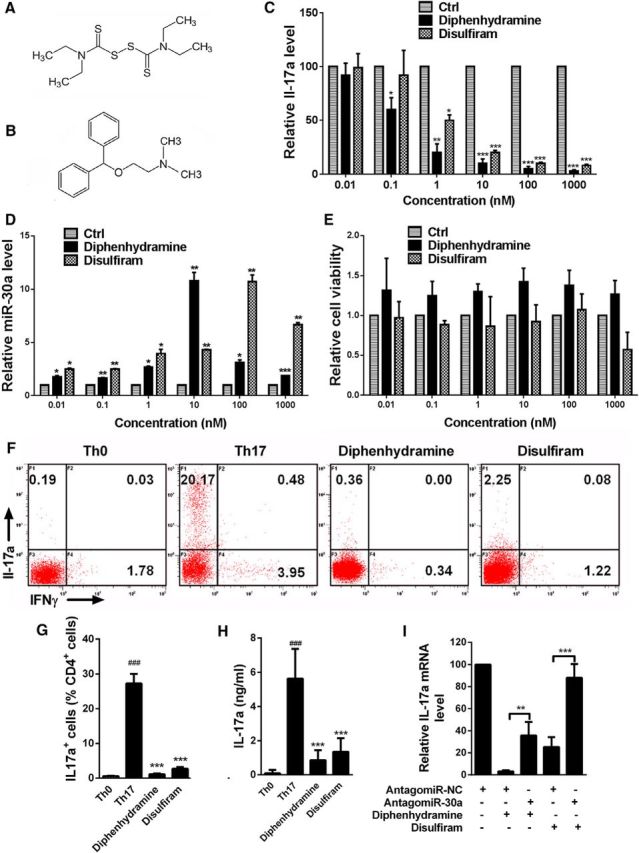Figure 5.

Diphenhydramine hydrochloride and disulfiram upregulate miR-30a and suppress Th17 differentiation. A, B, Molecular structure of diphenhydramine (A) and disulfiram (B). C, qPCR analysis of IL-17a in CD4+CD62L+ T cells with diphenhydramine hydrochloride or disulfiram added at different concentrations and cultured for 6 d in Th17-polarizing conditions (n = 3 independent experiments). D, qPCR analysis of miR-30a in CD4+CD62L+ T cells with diphenhydramine hydrochloride or disulfiram added at different concentrations and cultured for 6 d in Th17-polarizing conditions (n = 6 technical replicates). E, Cell viability detected by MTT assay of mouse naive CD4+CD62L+ Th cells after adding drugs of different concentrations as well as anti-CD3 (0.5 μg/ml; BD Biosciences) and anti-CD28 (1 μg/ml; BD Biosciences) antibody (n = 6 technical replicates). F, Representative intracellular staining of cytokine production in CD4+CD62L+ T cells with diphenhydramine hydrochloride or disulfiram added and cultured for 6 d in Th17-polarizing conditions. G, Ratio number of IL-17a+ cells in D (Th17 vs Th0, diphenhydramine and disulfiram vs Th17; n = 6 independent experiments). H, ELISA analysis of IL-17a in the supernatant of CD4+CD62L+ T cells with either of the two drugs or solvent added and cultured for 6 d in Th17-polarizing conditions (Th17 vs Th0, diphenhydramine and disulfiram vs Th17, n = 6 independent experiments). I, qPCR analysis of IL-17a of CD4+CD62L+ T cells cells transfected with AntagomiR-30a/NC in the presence of either diphenhydramine hydrochloride or disulfiram and cultured for 6 d in Th17-polarizing conditions (n = 3 independent experiments; *p < 0.05, **p < 0.01, ***p < 0.001 vs control, one-way ANOVA with Dunnett's or Tukey's post hoc test). Data are from at least three experiments and are shown as mean ± SEM.
